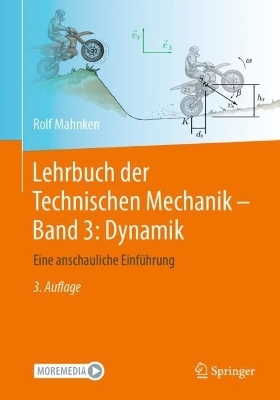
Tribology and Mechanics of Magnetic Storage Devices
Springer-Verlag New York Inc.
978-1-4612-7517-6 (ISBN)
1. Introduction.- 1.1 Definition and History of Tribology.- 1.2 Industrial Significance of Tribology.- 1.3 Physics of Magnetic Recording.- 1.4 Magnetic Data-Storage Systems.- 2. Solid Surface Characterization.- 2.1 The Nature of Surfaces.- 2.2 Statistical Analysis of Surface Roughness.- 2.3 Measurement of Surface Roughness.- 2.4 Measurement of Isolated Asperities.- 2.5 Physico-Chemical Characteristics of Surface Layers.- 3. Contact between Solid Surfaces.- 3.1 Physical Properties of Polymers.- 3.2 Apparent and Real Area of Contact.- 3.3 Analysis of the Real Area of Contact.- 3.4 Measurement of the Real Area of Contact.- 4. Friction.- 4.1 Introduction.- 4.2 Need for Controlled Friction.- 4.3 Friction Theories.- 4.4 Role of Physical Properties in Magnetic Tapes.- 4.5 Role of Interlayer Pressure in Magnetic Tapes.- 4.6 Role of Chemical Properties in Magnetic Tapes.- 4.7 Role of Physical and Chemical Properties in Rigid Disks.- 5. Interface Temperature of Sliding Surfaces.- 5.1 Introduction.- 5.2 Thermal Analysis.- 5.3 Application of Analysis to Particulate Magnetic Media.- 5.4 Temperature Measurement of Particulate Magnetic Tapes.- 6. Wear Mechanisms.- 6.1 Types of Wear Mechanics.- 6.2 Head Wear.- 6.3 Medium Wear.- 6.4 Head-Medium Wear Studies using Autoradiographic Techniques.- 6.5 Head-Tape Wear Studies In-Situ SEM.- 6.6 Tape-Path Component Wear.- 7. Measurement Techniques of Head and Medium Wear.- 7.1 Head and Tape Wear.- 7.2 Head Slider and Rigid Disk Wear.- 8. Lubrication Mechanisms and Lubricants.- 8.1 Regimes of Lubrication.- 8.2 Types of Lubricants.- 8.3 Methods of Lubrication in Magnetic Media.- 8.4 History of Lubricants for Magnetic Media.- 8.5 Mechanisms of Lubrication in Magnetic Media.- 8.6 Stability Studies of Magnetic Tape and Floppy Disk Lubricants.- 8.7 Volatility Studies of Rigid Disk Lubricants.- 9. Analysis and Measurement of Hydrodynamic Air Films.- 9.1 Lubrication Analysis.- 9.2 Measurement of Air-Film Thickness.- 10. Surface Finishing of Ceramic Head Materials.- 10.1 Grinding and Lapping Processes.- 10.2 Residual Stresses.- 10.3 Specific Energy.- 10.4 Interface Temperatures.- 10.5 Surface Finish and Morphology.- 10.6 Alternate Methods of Finishing Ferrites.- 11. Micro/Nanotribology and Micro/Nanomechanics.- 11.1 Introduction.- 11.2 Origins and Significance of Micro/Nanotribology.- 11.3 Experimental Techniques.- 11.4 Surface Roughness.- 11.5 Friction and Adhesion.- 11.6 Scratching and Wear.- 11.7 Indentation.- 11.8 Detection of Material Transfer.- 11.9 Lubrication.- 11.10 Nanofabrication/Nanomachining.- 11.11 Summary.- Appendix A: Techniques for Measuring Mechanical Properties of Thin Films.- Appendix B: Surface Analytical Techniques.- Appendix C: Accelerated Friction and Wear Tests.- Name Index.
| Zusatzinfo | XX, 1125 p. |
|---|---|
| Verlagsort | New York, NY |
| Sprache | englisch |
| Maße | 155 x 235 mm |
| Themenwelt | Mathematik / Informatik ► Mathematik ► Wahrscheinlichkeit / Kombinatorik |
| Technik ► Elektrotechnik / Energietechnik | |
| Technik ► Maschinenbau | |
| ISBN-10 | 1-4612-7517-2 / 1461275172 |
| ISBN-13 | 978-1-4612-7517-6 / 9781461275176 |
| Zustand | Neuware |
| Haben Sie eine Frage zum Produkt? |
aus dem Bereich


